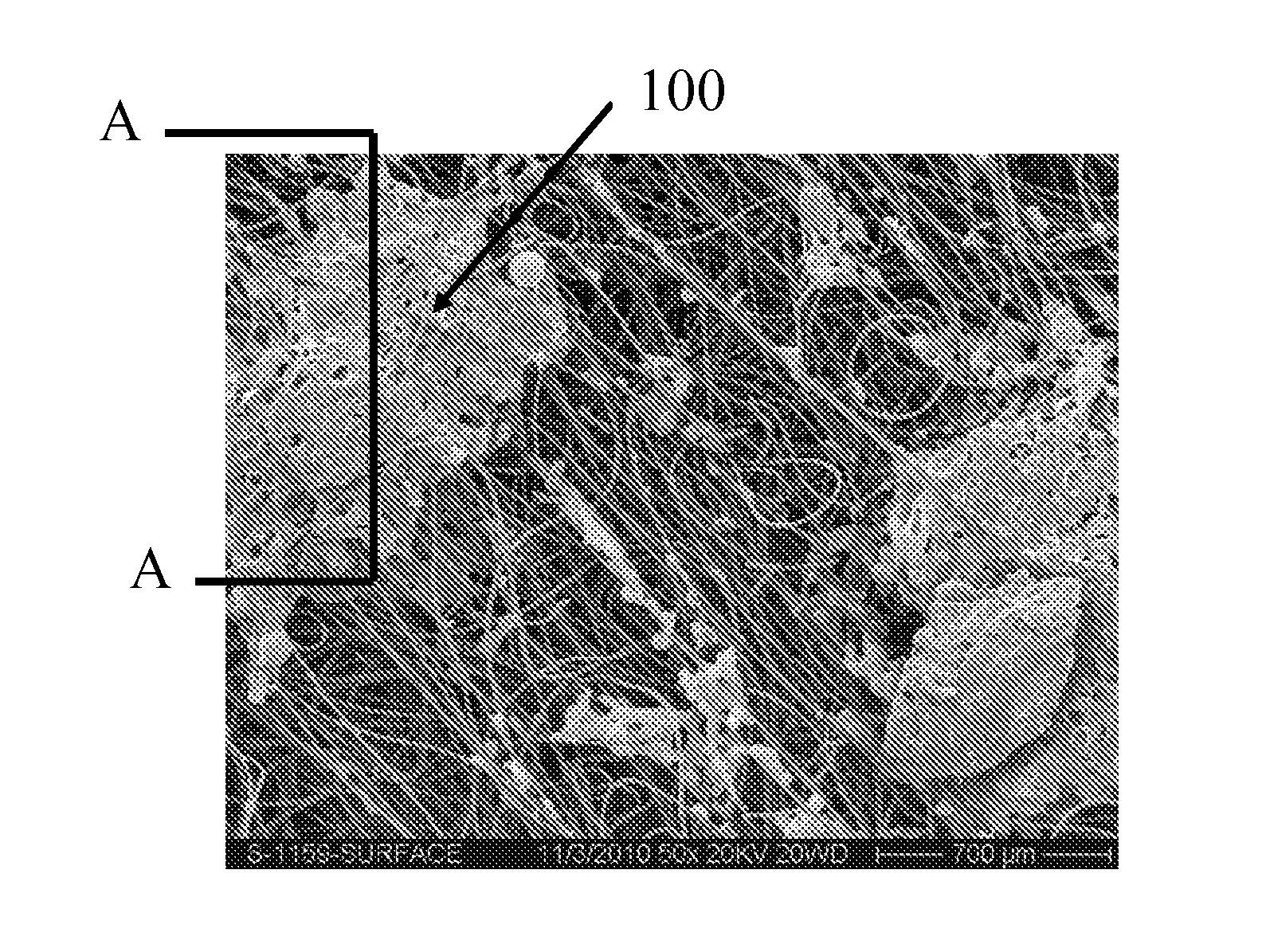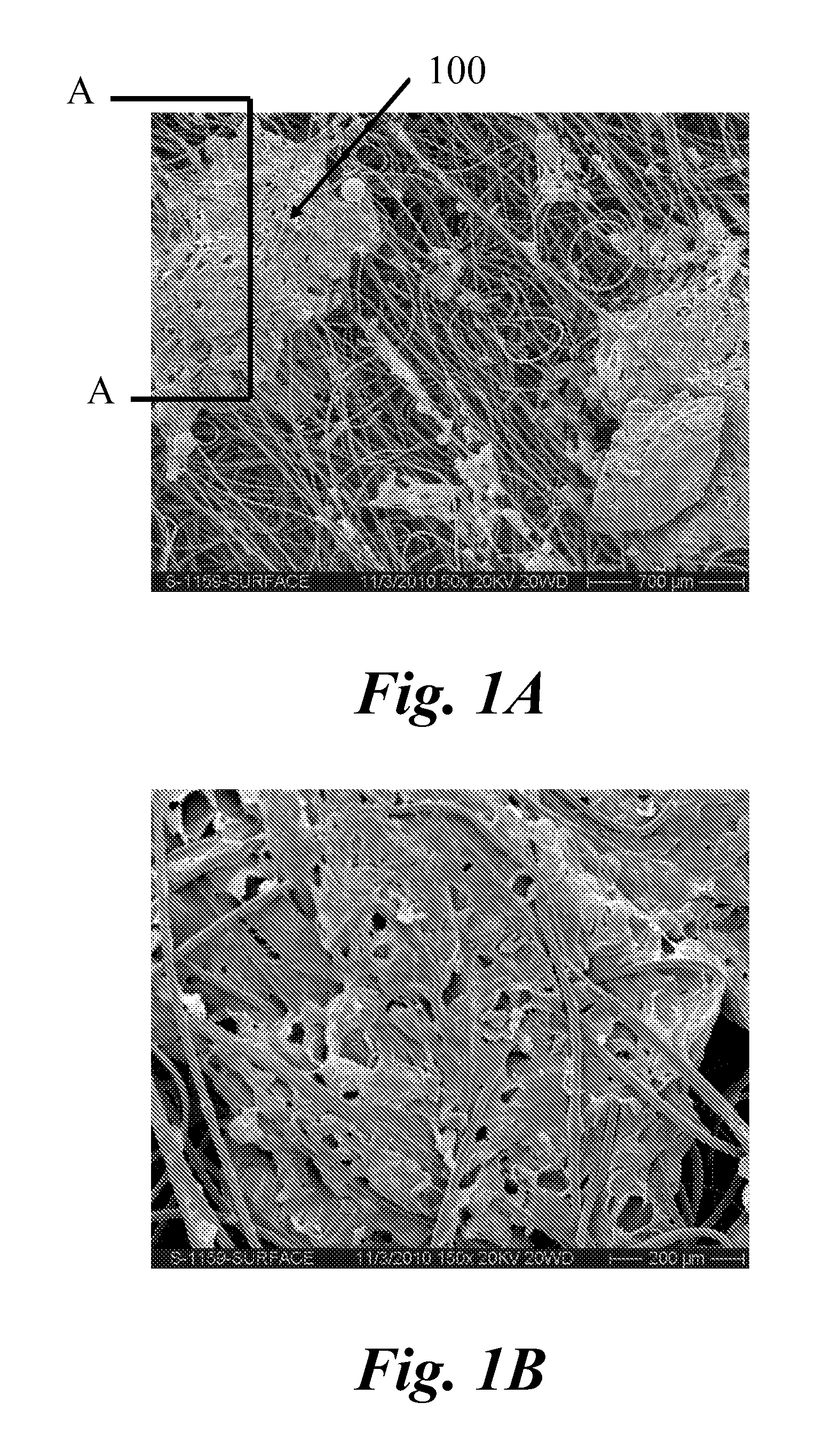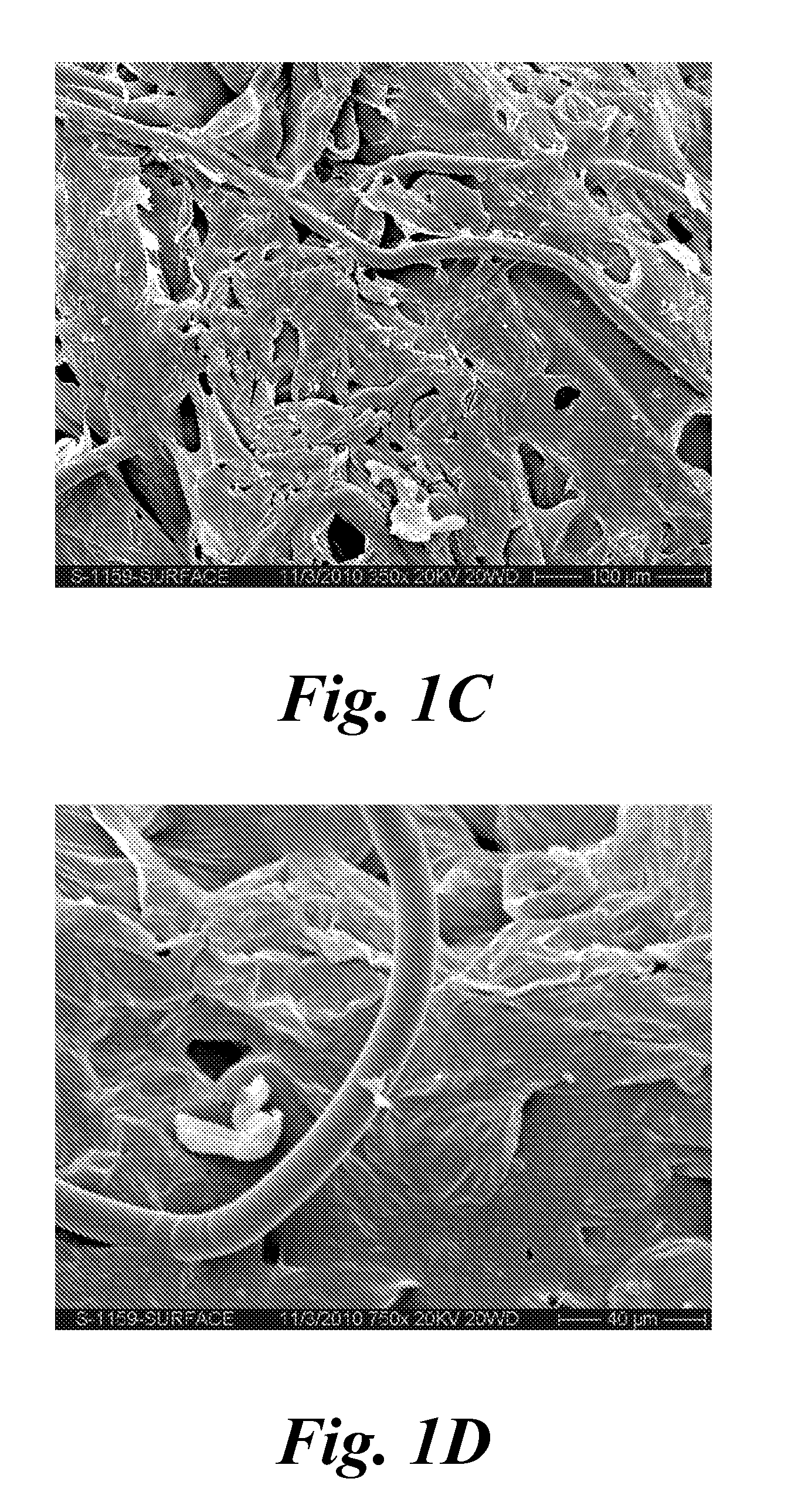In-line printing process on wet non-woven fabric and products thereof
a non-woven fabric and printing process technology, applied in the field of non-woven fabrics, can solve the problems of ineconomic viability of the process, high cost of creating such abrasive surfaces, and the fabric at the end of its creation step is wet, and achieves the effect of reducing the amount of energy required to remove this water, enhancing the thixotropic behavior, and increasing the solid conten
- Summary
- Abstract
- Description
- Claims
- Application Information
AI Technical Summary
Benefits of technology
Problems solved by technology
Method used
Image
Examples
example 1
Influence of the Solid Content of the Paste Formulation
[0074]A 60 gsm fabric was manufactured as described above with a fiber mixture of 30% Viscose and 70% PET and dots were printed onto the wet fabric using a screen printer as described above. The ink formulation, “Formulation A”, is used for printing. The Basic Paste Formulation designated “Formulation A” is made up of two different acrylic copolymers supplied by BASF (Germany) (ACRONAL LN 579 S and ACRONAL S-537 S) 21.3% and 12.9% respectively; and a range of additives for various purposes: Urea (wetting agent, 0.75%); Diethylene Glycol (Processing Aid, 0.02%); Trimethyllopropane tris (2-methyl-1-aziridine-propionate (Cross-linking agent (0.4%); Polyethoxylated Fatty Alcohol C9-C11 (emulsifier and Rheology agent 0.16%); Polyethoxylated Stearyl Alcohol C16-C18 (Emulsifier and Rheology agent, 1.51%); Sodium Lauryl Sulfate (Emulsifier and Rheology Agent, 1.17%); Antifoam agents, including Polydimethyl Siloxane and Silica and Preser...
example 2
Influence of the Rheology Profile and Thixotropy of the Paste Formulation
[0080]Table 2 shows the viscosity profiles of four different printing inks which have been employed in the different working examples.
[0081]All paste compositions are made up from Basic Formulation B. The Basic Paste Formulation designated Formulation B is made up of two different acrylic copolymers supplied by BASF (Germany) (ACRONAL LN 579 S and ACRONAL S-537 S) 21.3% and 12.9% respectively; A Puffing agent, polymeric microcapsules containing an expanding gas i.e., isobutane, supplier by AKZO Nobel (Sweden) (Expancel 031WUFX 40, 5%) and a range of additives for various purposes: Urea (wetting agent, 0.75%); Diethylene Glycol (Processing Aid, 0.02%); Trimethyllopropane tris (2-methyl-1-aziridine-propionate (Cross-linking agent (0.4%); Polyethoxylated Fatty Alcohol C9-C11 (emulsifier and Rheology agent 0.16%); Polyethoxylated Stearyl Alcohol C16-C18 (Emulsifier and Rheology agent, 1.51%); Sodium Lauryl Sulfate ...
example 2a
[0084]A 59 gsm fabric was manufactured as described above with a fiber mixture of 50% Viscose and 50% PET and dots were printed onto the wet fabric using a screen printer as described above. The ink formulation 57 with the above given rheology profile was used for printing. The dots printed had a size (diameter) of 1.2-1.3 mm and the fabric thickness was 0.71
PUM
| Property | Measurement | Unit |
|---|---|---|
| shear viscosity | aaaaa | aaaaa |
| shear viscosity | aaaaa | aaaaa |
| shear viscosity | aaaaa | aaaaa |
Abstract
Description
Claims
Application Information
 Login to View More
Login to View More - R&D
- Intellectual Property
- Life Sciences
- Materials
- Tech Scout
- Unparalleled Data Quality
- Higher Quality Content
- 60% Fewer Hallucinations
Browse by: Latest US Patents, China's latest patents, Technical Efficacy Thesaurus, Application Domain, Technology Topic, Popular Technical Reports.
© 2025 PatSnap. All rights reserved.Legal|Privacy policy|Modern Slavery Act Transparency Statement|Sitemap|About US| Contact US: help@patsnap.com



